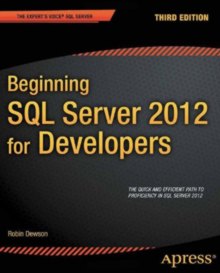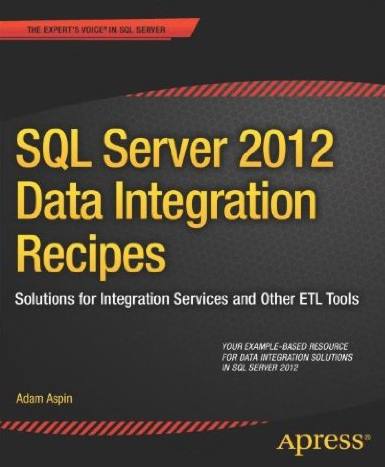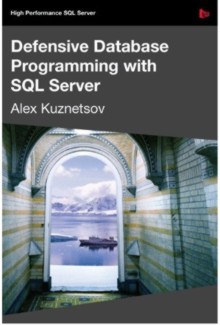| Pick of the Shelf - SQL Server 2012 |
| Written by Kay Ewbank | ||||
| Wednesday, 10 July 2013 | ||||
Page 2 of 3
T-SQLThe next choice applies if you want to learn about T-SQL in particular. Beginning SQL Server 2012 for Developers by Robin Dewson is strong in its coverage of T-SQL, though you’ll find some parts of the book irrelevant if you’re wanting it purely to learn about developing with SQL Server.
The book covers SQL Server Express as well as SQL Server 2012. Dewson has chapters on stored procedures and functions, and there’s useful coverage of aspects such as variables, temporary tables, aggregate functions, grouping, general functions, and error handling. Advanced T-SQL topics including subqueries, cursors and triggers are all introduced, and there’s a chapter on ‘connecting via code’, looking at connecting to SQL Server using Visual Basic for Applications, Visual Studio and Java. Reviewing the book, Kay Ewbank commented that she felt a more accurate title would have been "Beginning Developing for SQL Server 2012 in T-SQL", as there’s no coverage of SQL CLR (Common Language Runtime), how it fits with the .NET Framework, and the impressive things you can do with it, or even just the basics of how to use it to write stored procedures, triggers or user defined types in languages such as C# or VB. These omissions resulted in an overall rating of 3, but taken purely as a T-SQL work, it performs better. SQL Server 2012 Data Integration Recipes is aimed at developers needing to bring data into SQL Server, and the book gives detailed step by step instructions for taking data to and from a wide variety of data sources, and for how work with the data once you’ve got it into SQL Server. What’s important for developers is that the author shows how to automate this process to save on time and errors, so this isn’t just about how to carry out a task, but how to include it as part of a T-SQL or VB.NET script.
The examples are mainly written in T-SQL, with a smattering of MDX where the author is showing how to handle Analysis Services data. Where he’s writing SSIS scripts he mainly uses VB.NET, though there are a few examples that use C#. The book covers pretty much everything about using SSIS (SQL Server Integration Services), and also covers other aspects of ETL. Kay concludes that most database developers would find some elements of this book useful: You’re unlikely ever to need all of it - if you’re working with DB2 data, the section on working with Access will be wasted, for instance, and in general you’ll probably only use one small part of each chapter - the bit relevant to your particular circumstances. However, the scripts and T-SQL are clearly written and explained, and while you may only use a small percentage of the overall material, that’s down to the multiple options rather than any weakness of the book. Learning from your mistakes is all very well, but such mistakes can be expensive in time and money. Defensive Database Programming with SQL Server is designed to show you how to avoid pitfalls when developing against SQL Server. While its code examples are in T-SQL the principles explored are more or less universal and apply to all rdbms.
Nikos Vaggalis, who consider this book an indispensable guide was impressed by the way the author shows you how to think proactively and defensively, illustrating the process through numerous hands-on examples. He says that the book is also great for: “related topics such as how to efficiently organize your logic and code by using the numerous facilities this beast of a software, the RDBMS, provides to your own advantage. Like using stored procedures and triggers for both better data integrity and common logic encapsulation while enforcing business rules using constraints or looking at the phenomenon of lost updates.” Business IntelligenceYou can put forward a strong argument that Business Intelligence is the only real point of having a database; why keep data unless you're going to use it to make your business more effective, or in some other way to use the data to provide insights that can't be seen by 'just looking' at the records?
Pro SQL Server 2012 BI Solutions assumes no prior knowledge of BI or the BI elements of SQL Server. It isn't aimed at programmers in particular, just at database techies who need to understand BI. Overall, Kay Ewbank liked this book. It gives a good balanced view of what BI is all about, and how to go from a mass of data to a system that you can run queries and reports against. She concludes that if you don't really understand SQL Server's BI facilities, it's a good read, and it contains enough detail and descriptions to enable you to create a fully featured BI system. <ASIN:1430237503> <ASIN:1430247916> <ASIN:190643445X> <ASIN:1430234881> |
||||
| Last Updated ( Sunday, 11 November 2018 ) |




